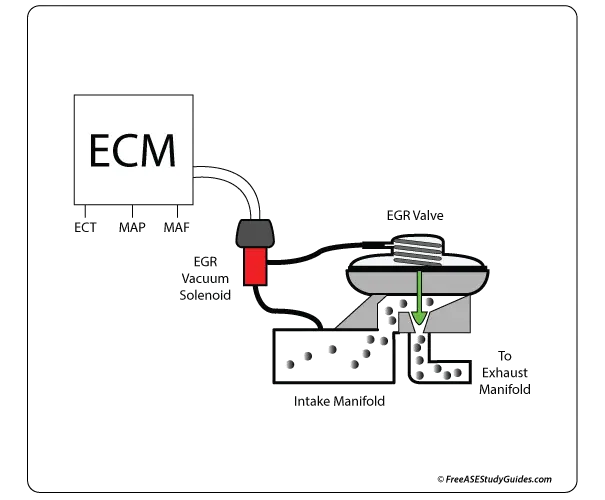Exhaust Gas Recirculation Valve

An (EGR) or exhaust gas recirculation valve is used on gasoline and diesel engines to reduce the amount of NOx or nitrogen oxides NO, and NO2 released into the atmosphere. This harmful gas forms when nitrogen and oxygen combine in high cylinder temperatures.
The EGR valve prevents the engine's cylinders from reaching damaging temperatures. It protects the environment from smog resulting from excessive NOx production.
It reduces NOx by recirculating a small amount of exhaust into the intake through a controlled opening between the intake manifold and the exhaust. Reducing the cylinder's temperature reduces the formation of this smog-forming gas.

Different types of EGR systems are used on various engines. For example, the vacuum-operated EGR valve in the illustration above opens by vacuum supplied through a duty cycle solenoid and closes by spring pressure.
EGR Valve Symptoms
The valve remains normally closed when the engine starts at idle and wide-open throttle. However, a faulty EGR valve or related component may leave the valve stuck in one position. A stuck open EGR valve results in a rough idle and a lean air-fuel mixture because the engine now has a major vacuum leak. The symptoms of a stuck closed EGR valve are engine pre-ignition, ping, and knock.